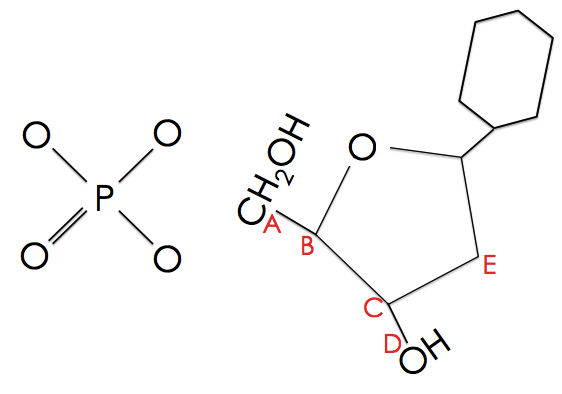WBR0319: Difference between revisions
Jump to navigation
Jump to search
No edit summary |
Sergekorjian (talk | contribs) No edit summary |
||
| Line 1: | Line 1: | ||
{{WBRQuestion | {{WBRQuestion | ||
|QuestionAuthor={{ | |QuestionAuthor={{YD}} (Reviewed by Serge Korjian) | ||
|ExamType=USMLE Step 1 | |ExamType=USMLE Step 1 | ||
|MainCategory=Biochemistry | |MainCategory=Biochemistry | ||
| Line 8: | Line 8: | ||
|MainCategory=Biochemistry | |MainCategory=Biochemistry | ||
|SubCategory=General Principles | |SubCategory=General Principles | ||
|MainCategory=Biochemistry | |||
|MainCategory=Biochemistry | |MainCategory=Biochemistry | ||
|MainCategory=Biochemistry | |MainCategory=Biochemistry | ||
| Line 20: | Line 21: | ||
|MainCategory=Biochemistry | |MainCategory=Biochemistry | ||
|SubCategory=General Principles | |SubCategory=General Principles | ||
|Prompt=During DNA synthesis, the | |Prompt=During DNA synthesis, the nucleoside bears a triphosphate which is employed as a source of energy for the formation of the phosphodiester bond by DNA ligase. Using the simplified diagram below showing only 1 phosphate, at which site does the nucleoside incorporate the triphosphate? | ||
[[Image:WBR0319.png|400px]] | [[Image:WBR0319.png|400px]] | ||
|Explanation=[[Image:DNASynth.png|400px]] | |Explanation=[[Image:DNASynth.png|400px]] | ||
In DNA synthesis, the | In DNA synthesis, the nucleoside bears a triphosphate at the 5' region of the sugar. When the nucleotide (nucleoside + triphosphate) is added to the pre-existing chain at the 3' region of the sugar, 2 phosphates are released and one phosphate remains in the chain. The 5' end is termed the "donor" as the energy derived from this reaction is essential for the activity of DNA ligase. | ||
|AnswerA=A | |AnswerA=A | ||
|AnswerAExp="A" corresponds to the 5' region of the nucleoside. It bears the triphosphate ring. | |AnswerAExp="A" corresponds to the 5' region of the nucleoside. It bears the triphosphate ring. | ||
|AnswerB=B | |AnswerB=B | ||
|AnswerBExp="B" corresponds to the 4' region of the nucleoside. It does not bear the triphosphate ring. | |AnswerBExp="B" corresponds to the 4' region of the nucleoside. It does not bear the triphosphate ring. | ||
| Line 37: | Line 34: | ||
|AnswerCExp="C" corresponds to the 3' region of the nucleoside. It bears the hydoxyl group, where the new nucleotide (containing the triphosphate) is added. | |AnswerCExp="C" corresponds to the 3' region of the nucleoside. It bears the hydoxyl group, where the new nucleotide (containing the triphosphate) is added. | ||
|AnswerD=D | |AnswerD=D | ||
|AnswerDExp="D" corresponds to the hydroxyl group. It does not bear the triphosphate | |AnswerDExp="D" corresponds to the hydroxyl group. It does not bear the triphosphate | ||
|AnswerE=E | |AnswerE=E | ||
|AnswerEExp="E" corresponds to the 2' region of the nucleoside. It does not bear the triphosphate ring. | |AnswerEExp="E" corresponds to the 2' region of the nucleoside. It does not bear the triphosphate ring. | ||
|EducationalObjectives=Triphosphate is added at the 5' region of the nucleoside. | |||
|References=Kornberg A, Baker TA. DNA Replication. University Science Books; 2005. | |||
|RightAnswer=A | |RightAnswer=A | ||
|WBRKeyword=DNA | |WBRKeyword=DNA synthesis, Triphosphate, Nucleoside, Nucleotide, Nitrogenous base, DNA, DNA ligase, | ||
|Approved= | |Approved=Yes | ||
}} | }} | ||
Revision as of 20:08, 2 September 2014
| Author | [[PageAuthor::Yazan Daaboul, M.D. (Reviewed by Serge Korjian)]] |
|---|---|
| Exam Type | ExamType::USMLE Step 1 |
| Main Category | MainCategory::Biochemistry |
| Sub Category | SubCategory::General Principles |
| Prompt | [[Prompt::During DNA synthesis, the nucleoside bears a triphosphate which is employed as a source of energy for the formation of the phosphodiester bond by DNA ligase. Using the simplified diagram below showing only 1 phosphate, at which site does the nucleoside incorporate the triphosphate? |
| Answer A | AnswerA::A |
| Answer A Explanation | AnswerAExp::"A" corresponds to the 5' region of the nucleoside. It bears the triphosphate ring. |
| Answer B | AnswerB::B |
| Answer B Explanation | AnswerBExp::"B" corresponds to the 4' region of the nucleoside. It does not bear the triphosphate ring. |
| Answer C | AnswerC::C |
| Answer C Explanation | AnswerCExp::"C" corresponds to the 3' region of the nucleoside. It bears the hydoxyl group, where the new nucleotide (containing the triphosphate) is added. |
| Answer D | AnswerD::D |
| Answer D Explanation | AnswerDExp::"D" corresponds to the hydroxyl group. It does not bear the triphosphate |
| Answer E | AnswerE::E |
| Answer E Explanation | AnswerEExp::"E" corresponds to the 2' region of the nucleoside. It does not bear the triphosphate ring. |
| Right Answer | RightAnswer::A |
| Explanation | [[Explanation::
In DNA synthesis, the nucleoside bears a triphosphate at the 5' region of the sugar. When the nucleotide (nucleoside + triphosphate) is added to the pre-existing chain at the 3' region of the sugar, 2 phosphates are released and one phosphate remains in the chain. The 5' end is termed the "donor" as the energy derived from this reaction is essential for the activity of DNA ligase. |
| Approved | Approved::Yes |
| Keyword | WBRKeyword::DNA synthesis, WBRKeyword::Triphosphate, WBRKeyword::Nucleoside, WBRKeyword::Nucleotide, WBRKeyword::Nitrogenous base, WBRKeyword::DNA, WBRKeyword::DNA ligase |
| Linked Question | Linked:: |
| Order in Linked Questions | LinkedOrder:: |
